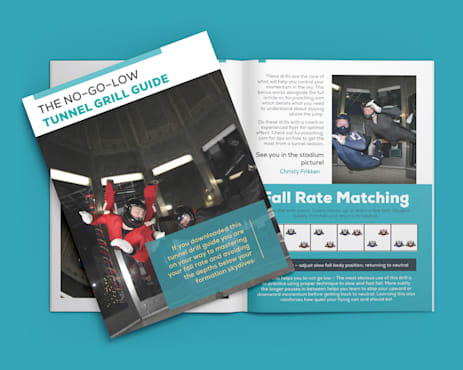How to Get More from Your Tunnel Session
Saturday, July 9, 2016

Physical Prep Before Session
If you are on the edges of physically fit, take the time to build a little upper body strength and do some stretching. Both of these activities are not only completely free, but they will have a positive impact on how long and well you can fly. It sucks when your last five minutes are not as strong as your first ten simply because you’re coping with the challenges of being fatigued.
Stretching in particular is an awesome habit. Stretching is a fitness goal that sees results quickly when compared to strength or cardio training. It is free and increases your fall rate range.
If you are struggling with strength, push-ups are particularly good for future tunnel flyers (and they, too, are completely free!). The chest and arm muscles are the parts that get the sorest for many students.
Know Your Goals
Before you show up for the tunnel session, think about what you want to accomplish. When I ask students what they want to work on I commonly get the ‘whatever you think’ response. Putting yourself in the coach’s hands is a good concept, but maybe a little less effective than having an actual target. I am happy to craft some goals for you, and you will make progress towards them during the session regardless. If you are just starting out this is probably fine, but as you get some experience this might not get the results you really want.
You are by far the most familiar with what you have done and where you want to go. Even if I have worked with someone dozens of times over the course of the year, it is harder for me to remember what you did last time than it is for you.
If you have a concrete target such as ‘improve my leg turns’ or ‘increase my fall rate range’, I have dozens of drills that can target those areas. Even if your goal is bigger picture, like stop going low on big-ways or become an amazing point flyer, having a concrete direction for your session will increase your success.
Take Notes
My most successful students take notes. The act of physically writing down your improvements will increase the chance you will remember what you need to do. Plus, it will be a handy reminder of what you worked on and what you should be doing next month at your next tunnel session!
Leave With a Plan
Make sure you leave with a plan for what you will do in your next tunnel session or jumping camp. A coach can give you the big picture and specific advice for how to progress in your skills. If you have shared your big skydiving goals with the coach beforehand, ask them for a strategy to move you forward. They can recommend more tunnel, skydiving, homework, particular programs, or events.
It also doesn’t hurt to ask what specifically you should work on during your next tunnel sessions. If you took notes during the debrief, you can verify that your next steps are correct. The coach might share areas of strength and weakness for you, and even make recommendations for specific tunnel drills that can help.
Tunnel time is an incredibly valuable tool, but not everyone has an infinite supply. These steps will go a long way into maximizing your learning experience however long or short your next tunnel session.



